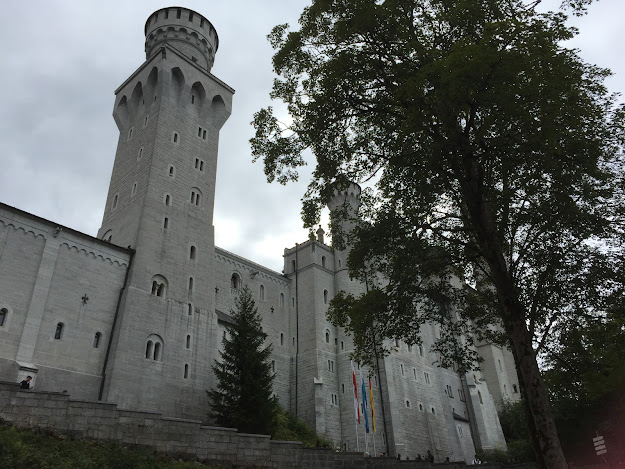このノイシュヴァンシュタイン城は、第4代バイエルン国王のルードヴィヒ2世によって築かれた。1869年9月5日から工事が始まり、1886年にはほぼ完成した。
ルードヴィヒ2世は、1845年8月25日、当時はまだ皇太子だったマキシミリアン2世の長男として生まれた。
幼い頃から、ゲルマンの神話や騎士伝説を聞くのが好きで、そうした世界に深い憧れを抱いていたという。
This Neuschwanstein castle was built by Ludwig II, the fourth King of Bavarian. Construction began on September 5, 1869 and was almost completed in 1886.
Ludwig II was born on August 25, 1845 as the eldest son of Maximilian II, who was still a prince.
From an early age, he liked listening to Germanic myths and knight legends, and had a deep yearning for such a world.
Ludwig II was born on August 25, 1845 as the eldest son of Maximilian II, who was still a prince.
From an early age, he liked listening to Germanic myths and knight legends, and had a deep yearning for such a world.
1864年3月10日にマクシミリアン2世が崩御して、ルードヴィヒ2世が第4代のバイエルン王になったが、すぐに幼い頃からの熱狂的なファンであったワーグナーを宮廷に招いた。
周囲の激しい反対にあって、ワーグナーは一時宮廷を離れざるを得なくなったが、ルードヴィヒ2世は、このノイシュヴァンシュタイン城を始めとして、ヘレンキームゼー城やリンダーホーフ城など、数多くの城を立て続けた。
On March 10, 1864, Maximilian II collapsed and Ludwig II became the fourth King of Bavarian, but soon invited Wagner, a fanatic fanatic, to his court.
Although Wagner was forced to leave the court temporarily due to the fierce opposition around him, Ludwig II continued to build numerous castles, including the Neuschwanstein Castle, Herrenchiemsee Castle and Linderhof Castle.
Although Wagner was forced to leave the court temporarily due to the fierce opposition around him, Ludwig II continued to build numerous castles, including the Neuschwanstein Castle, Herrenchiemsee Castle and Linderhof Castle.
ようやく、ノイシュヴァンシュタイン城の入り口にやってきた。
赤いレンガの壮麗なファサードが観光客を出迎える。
Finally, I arrived at the entrance of Neuschwanstein Castle.
The magnificent facade of red bricks welcomes tourists.
The magnificent facade of red bricks welcomes tourists.
城への入場は時間制になっている。
来場者は、入り口の電光掲示板で、チケットセンターで購入したチケットの番号で、自分が入場できる時間を確認することができる。
Admission to the castle is timed.
Visitors can check the time when they can enter from the ticket number purchased at the ticket center on the electronic bulletin board at the entrance.
Visitors can check the time when they can enter from the ticket number purchased at the ticket center on the electronic bulletin board at the entrance.
入り口前の広場には、多くの観光客が自分の順番を待っていた。
そして、いよいよ自分の時間がやってきた。
いざ、ルードヴィヒ2世が築いた、夢の世界へ!
Many tourists were waiting for their turn in the square in front of the entrance.
And finally, my time has come.
Enter the dream world of Ludwig II!
And finally, my time has come.
Enter the dream world of Ludwig II!
(Translated by Google Translate)





コメント
コメントを投稿